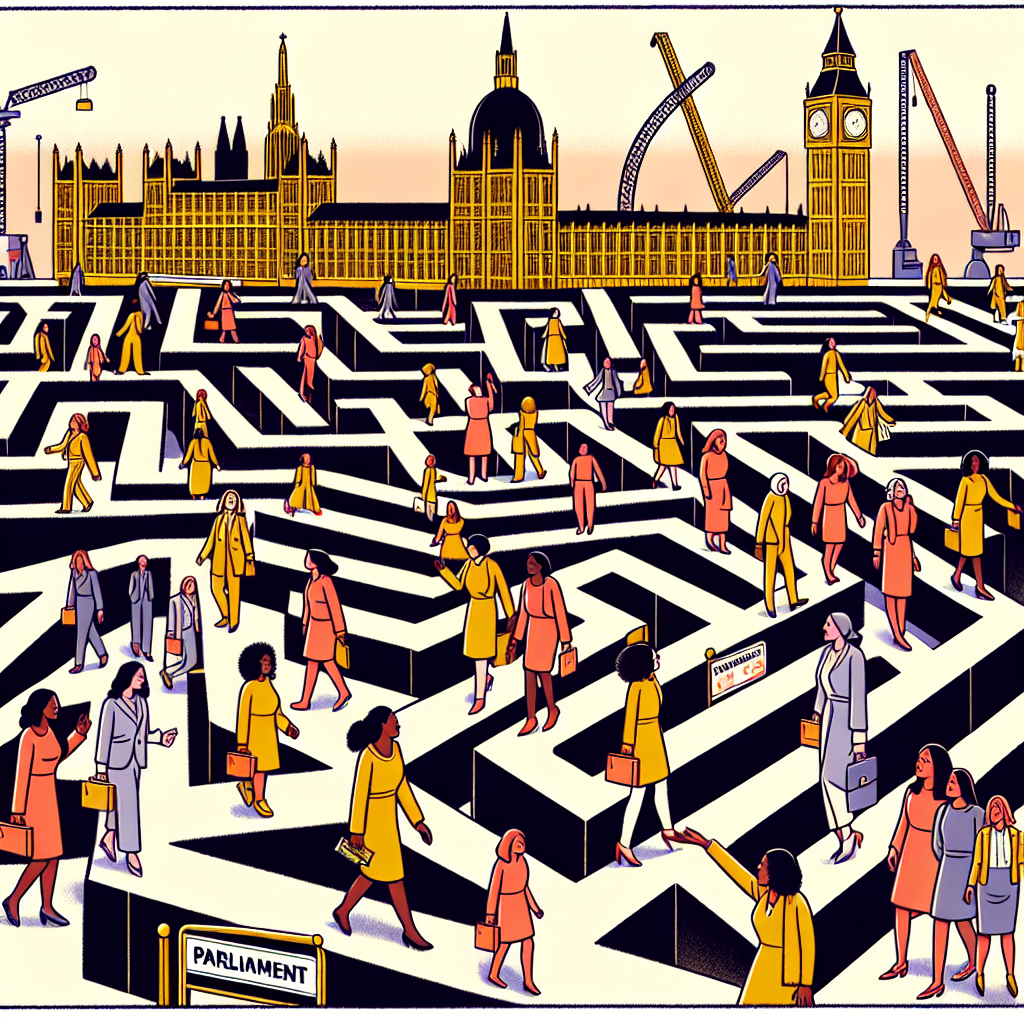A Look at Women in UK Politics: Progress and Barriers
In recent years, the visibility and impact of women in UK politics have become increasingly prominent. With significant strides made towards gender equality, this evolution enables a deeper analysis of progress and remaining barriers. As of 2025, women occupy critical roles in political leadership and legislative processes, although challenges still exist. This article explores women’s progress in the UK political landscape, the barriers they continue to face, and what the future holds for achieving true gender parity in governance.
The Historical Context of Women in UK Politics: A Journey Towards Representation
Understanding the current state of women in UK politics requires a look back at the historical context that has shaped their participation. The journey began in the early 20th century when women first secured the right to vote and stand for office, a critical milestone punctuated by the Representation of the People Act 1918. This legislation granted limited suffrage to women over 30, but it wasn’t until 1928, with a significant reform, that women achieved equal voting rights with men. These early changes laid the groundwork for greater female participation in politics, but the assimilation of women into political roles has been gradual, often marred by societal expectations that promoted a traditional view of governance.
Fast forward to the 21st century; the landscape has transformed significantly. The UK Parliament has seen an increase in female representation, with women currently making up approximately 48% of the Labour Party and 26% of the Conservative Party members in Parliament. Prominent figures such as Nicola Sturgeon and Priti Patel have broken through historic gender barriers, serving as First Minister of Scotland and Home Secretary, respectively. However, the representation of women in more localized politics, such as councils and boards, still lags behind, highlighting the ongoing need for systemic reforms to increase participation at every level.
Current Representation of Women in Politics: The Good, the Bad, and the Opportunities
As of 2025, the political representation of women in the UK has reached historical heights. In the current government, there is a notable presence of women in key governmental roles, showcasing a significant shift towards equity. Female members of Parliament are increasingly taking charge of vital committees and ministerial positions, which were traditionally male-dominated. The Diversity in Politics Report 2025 emphasized the importance of mentorship programs and leadership training targeted at women, which have proven effective in providing the necessary tools for aspiring female politicians.
Nonetheless, while there has been progress, challenges persist. Women from minority backgrounds, for example, continue to face compounded barriers, including racial discrimination and socio-economic challenges, which further reduce their representation in political offices. Although initiatives aimed at increasing diversity within political parties have emerged, such as all-women shortlists, critics argue that these strategies do not address the underlying social structures that impact women’s political aspirations. A concerted effort to address these barriers is essential for fostering a truly inclusive political landscape.
Barriers Faced by Women in UK Politics: Unpacking the Challenges
Despite the advancements made, women in UK politics continue to face formidable barriers that inhibit their full participation. Societal attitudes remain a significant factor; political culture often promotes traditional gender roles that equate leadership with masculinity. Misogyny and sexism are prevalent in political discourse and can manifest in media scrutiny and online harassment directed at female politicians. These factors contribute to a hostile environment that can dissuade women from pursuing political careers in the first place or lead to burnout among those who do.
Moreover, a lack of adequate support systems, including childcare provisions and flexible working arrangements, hampers the ability of female politicians to balance public life with family responsibilities. The disparity in domestic responsibilities continues to disproportionately affect women, limiting their availability and capacity to engage in political activities fully. Campaigns for reform surrounding work-life balance in Parliament are gaining traction and highlight the necessity for institutional changes that would make a political career more accessible for women, particularly those with caregiving responsibilities.
Increasing the visibility of female leaders and creating supportive networks can also play a pivotal role in combating these barriers. Women-centered organizations and initiatives are increasingly offering mentorship and resources to bolster women in politics. Programs designed to cultivate skills, encourage public speaking, and provide networking opportunities are essential in normalizing the presence of women in all levels of government.
Global Comparisons: Learning from Other Countries
When assessing the progress and barriers faced by women in UK politics, a comparative lens with other countries can provide valuable insights. The Nordic countries, known for their high levels of gender equality, illustrate that political representation can flourish in a supportive environment. Sweden, for example, has made remarkable strides, achieving approximately 50% representation of women in Parliament. This success is largely attributed to comprehensive family policies, including parental leave and subsidized childcare, which empower women to engage in public life without sacrificing their family responsibilities.
Conversely, nations that rank lower on the gender equality index often have starkly different political landscapes. In some regions, recent economic and cultural challenges have led to a regression in women’s rights and representation. Learning from these global trends emphasizes the importance of adopting a multifaceted approach toward enhancing female political participation in the UK. Policies inspired by successful international examples can provide frameworks for overcoming existing barriers while fostering a more inclusive political culture.
Engagement with multiple stakeholders, including political parties, civil society organizations, and grassroots movements, is essential in developing context-specific strategies that resonate with local challenges. As the UK continuously grapples with its political identity and public policy challenges, it must also consider lessons learned from other societies regarding how to create inclusive governance.
The Future of Women in UK Politics: Opportunities for Change
Looking toward the future, the focus on women’s representation in UK politics is set to evolve. The next general election in 2025, paired with ongoing discussions surrounding electoral reforms, presents an opportunity for transformational changes that can further enhance women’s political engagement. Political parties are increasingly aware of the need to consciously prioritize diversity and representational equity, and new initiatives are continually being launched to attract women to political careers.
Technological advancements, especially social media, have created platforms for women to share their political ideas and advocate for change. Many women utilize these platforms to engage with communities, promoting their political agendas and campaigns while challenging stereotypes associated with women in leadership. This digital revolution could redefine how women strategize their participation within politics, breaking traditional pathways to foster a more inclusive political arena.
Finally, the role of education cannot be overlooked as a central pillar in future change. Encouraging young women to consider careers in politics, starting in educational institutions, can nurture the next generation of female leaders. Engaging girls in discussions about political participation and providing resources for political education can foster confidence and ambition from an early age, ensuring a more equitably represented government in years to come.
Conclusion
In conclusion, while notable advancements have been made in representing women in UK politics, significant barriers still persist that require concerted efforts to overcome. From combating societal attitudes to implementing policies that support political careers for women, the road ahead includes both opportunities and challenges. The historical context shows a progressive trend toward inclusion, which is bolstered by successful global practices. As the UK moves forward, prioritizing women’s representation will not only enrich the political conversation but will also cultivate a government that more accurately reflects the diverse society it serves.
FAQs
What significant progress have women made in UK politics recently?
Women have made considerable progress in recent years, with an increase in representation in Parliament and key governmental roles. The Labour Party has approximately 48% female membership, providing a strong foundation for future female leaders.
What are the primary barriers women face in UK politics today?
Women face several barriers, including societal attitudes that perpetuate gender stereotypes, a lack of support systems for work-life balance, and persistent misogyny and sexism in political discourse.
How can the UK improve women’s representation in politics?
Improving women’s representation can be achieved through supportive policies, mentorship programs, education, and adopting best practices from countries with high levels of gender equality, such as the Nordic nations.












